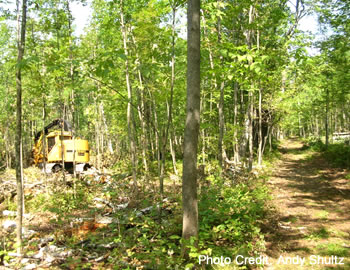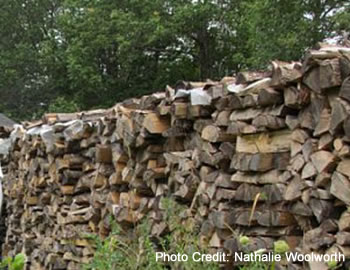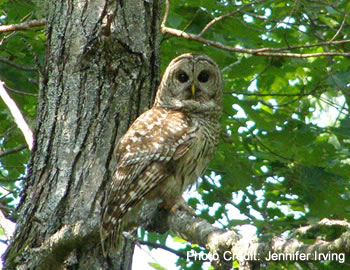Home → Your Woodland → Learn What You Can Do for Kennebec County's Woodlands → A Stewardship Storyline →Should I harvest trees on my property?
Your Woodland: A Stewardship Storyline
Should I harvest trees on my property?
Harvesting trees can help woodland owners achieve a variety of short- and long-term goals. It can:
- supply you with firewood or other materials
- enhance specific types of habitat
- increase the growth of certain tree species for habitat, scenic qualities, or timber
- allow new seedlings or sprouts to germinate
- reduce the presence of damaging insects or diseases
- provide income through the sale of forest products.
Harvesting can be implemented in a range of intensities, from thinning a few trees in a small area to creating canopy openings in a larger-scale operation. Ideally, silvicultural goals for a timber harvest mimic natural disturbances, while capturing monetary or other values from the harvested trees.
Some areas in a woodlot or wooded landscape may be designated for little or no timber Harvesting. These reserves can meet particular habitat, ecological, or recreational goals. Actively managed woodland often includes no-cut zones. Within larger forests, reserves can be set aside as study sites to show how natural processes influence forest ecology and succession patterns.
Harvesting may be done by landowners themselves or by contracting with a skilled professional logger. A successful harvest will protect soil, wetlands and streams, plant and wildlife habitat, and the woodlot’s appearance, while improving the future condition of the forest.
Are you ready to harvest trees on your property? If so, you may wish to explore some of the following resources:
Learn about the difference between foresters and loggers.
View a list of foresters who can help you determine whether and how to harvest trees on your property.
For an example of a harvest plan template and a pre- and post-harvest checklist, you may wish to visit the Master Logger website.
Read about the standards of Maine's Master Loggers.
Read a short essay on selective cutting.
Learn how forest biomass guidelines ensure forests can support wildlife, maintain biodiversity, provide clean water, sequester carbon, protect forest soil productivity, and continue to produce income after a biomass harvest.
Would you like to talk with a person about this stewardship step? Here are some partners who can help:


